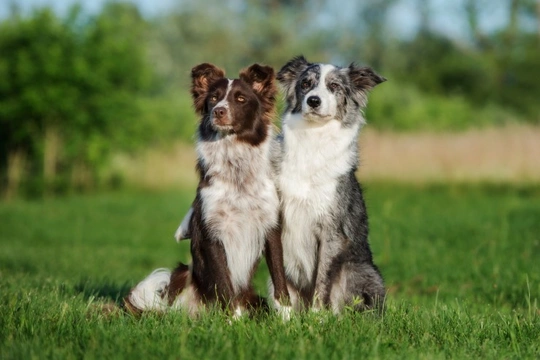
Imerslund-Grasbeck syndrome (IGS) in Border collies
Imerslund-Grasbeck syndrome is a hereditary health condition that can affect dogs from the Border collie breed, and the genetic markers for the condition are found in 7-8% of all Border collies worldwide.
The condition occurs due to low levels of cobalamin or vitamin B12, which in turn leads to a type of anaemia in affected dogs, due to a shortage of sufficient red blood cells. The red blood cells that are present within the bloodstream are larger than the norm, and the condition can also lead to proteinuria, or abnormally high levels of protein in the urine. However, unlike proteinuria caused by a kidney disease or other problem, affected dogs tend to have normal kidney function.
In dogs affected by the condition, they are unable to absorb appropriate levels of vitamin B12 in their gut, which can lead to a range of symptoms as well as anaemia and potentially high protein levels in the urine. Dogs with the condition tend to urinate frequently, and suffer from lethargy after eating as well as a general failure to thrive and gain or maintain weight.
Because the condition is hereditary and so, can be passed on through the gene pool from dog to dog via the breed line, it is important that dogs that can pass on the affected form of the condition are not used for breeding from.
In order to allow breeders to make an informed choice about the viability of breeding from their own dog and the suitability of any potential match, The Kennel Club introduced a screening scheme for the condition in 2015, to allow would-be breeders to find out their own dog’s status and so, make an informed decision on whether or not to breed from them.
In this article, we will look at Imerslund-Grasbeck syndrome in Border collies in more detail, including how the heredity of the condition works, and how to get your dog tested. Read on to learn more.
More about Imerslund-Grasbeck syndrome
Healthy dogs naturally produce their own vitamin B12 (cobalamin) by means of their metabolism of food, and dogs are born with a small reserve of B12 in the liver as well.
However, dogs affected with the condition cannot produce their own B12 once they have used up their postnatal reserves, which means that dogs affected by the condition will become symptomatic from a young age, sometimes as early as six weeks old.
The symptoms of the condition in affected puppies includes failure to thrive, poor appetite and an inability to gain weight, neutropenia (a deficiency in the white blood cells) and non-regenerative anaemia-a dangerous form of anaemia in which the dog is unable to recover their red blood cell production from the bone marrow on their own.
What sort of dogs can inherit the condition?
In the UK, Imerslund-Grasbeck syndrome is found in the Border collie dog breed at a rate of 6-8% of all dogs of the breed being either affected by, or a carrier of the condition. The disease can also be found in the Beagle breed too, although not at such a high rate of occurrence in the UK as it is in the Border collie.
Dogs with some Border collie ancestry and cross-breed dogs with Border collie lineage can of course inherit the faulty gene that causes the condition too, but because Imerslund-Grasbeck syndrome is an autosomal recessive condition and so, relies upon the combination of genes inherited from both parents in order to affect any given dog, the hybrid vigour of outcrossing makes it rare in non-pedigrees.
How does the heredity of Imerslund-Grasbeck syndrome work?
Imerslund-Grasbeck syndrome is an autosomal recessive hereditary condition, and dogs are assigned to one of three statuses: Clear, carrier or affected. Clear dogs are completely free of the gene mutation that causes the condition, whilst carriers will not be affected by the condition themselves, but may potentially have offspring that are, depending on the status of the other parent dog.
Affected dogs themselves exhibit the condition. The heredity of the condition is as follows:
- Two clear dogs will have clear puppies.
- Two affected dogs will have affected puppies.
- Two carriers will produce a litter with odds of 50% carrier, 25% affected and 25% clear.
- A clear dog and a carrier will produce 50% carriers and 50% clear.
- A clear dog and an affected dog will produce a litter of carriers.
- A carrier and an affected dog will produce 50% carriers and 50% clear.
How to get your dog tested
The status of any given dog can be determined by means of a DNA test, which can be performed on a blood sample, buccal swab, or dew claw clipping. You can send your sample off to one of The Kennel Club’s approved laboratories, who will then return the results of your own dog’s status.



